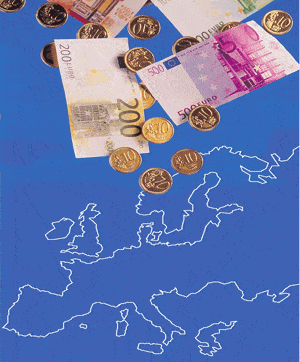Banks and regulators are working together to cut the costs of cross-border payments in Europe.

Since its inception, the European single currency has been fraught with economic and political problems, with some countries threatening to pull out of the euro and others blaming it for their economic woes. The single currency has also raised the expectations of consumers and policy makers alike. Increasingly, European Commission (EC) policy makers and major multinationals that do business across Europe are asking, how can you have a single currency without a single harmonized market in terms of taxation, legal requirements and payment systems and instruments, why are intra-EU payments still so expensive, and why does the cost of a domestic payment vary markedly from one EU country to the next?
Historically, cross-border payments within the EU have been both expensive and slow. A 1999 study found that the cost of cross-border credit transfers varied markedly from 3.5 to 26 for smaller amounts and from 31 to 400 for larger sums. It also found that banks in some countries charged additional fees for extras such as balance-of-payments reporting, currency conversion and communication charges. The average time taken to complete a cross-border credit transfer was 4.8 working days, although the EC found this varied between countries, with more than 15% of transactions taking longer than a week.
This is the kind of ammunition that prompts bureaucrats in Brussels to act, and act they did: In 2001 the European Parliament issued its regulation on cross-border payments in euro, which called for cross-border payments to be priced the same as domestic payments. As of 2003 the regulation applied to cross-border credit transfers and electronic payments up to 12,500 (the limit has since risen to 50,000). It was a controversial piece of legislation given that cross-border euro transfers comprised only 2% of total payment volumes within Europe. The point that legislators were trying to make, however, is that in a single market there should be no differentiation between domestic and cross-border payments.
Following publication of the regulation on cross-border payments, a group of 42 banks formed the European Payments Council (EPC). In 2002, in conjunction with the European Credit Sector Associations and the European Banking Association, the EPC released a white paper outlining a vision for a single euro payments area, or SEPA, by 2010, a payments market in which cross-border payments could be made as easily and inexpensively as domestic payments.
The banks have already achieved some cost savings through the introduction of Bank Identifier Codes (BICs) and International Bank Account Numbers (IBAN), which enabled increased automation of cross-border payments. According to the EC, this made it easier and cheaper for customers to perform many types of payments, as well as kick-starting other initiatives for the creation of SEPA. In March this year, the EPC also finalized rulebooks for three new SEPA payment instruments: pan-European credit transfers, pan-European direct debits and a pan-European cards framework for the development of a general purpose card scheme for payments and withdrawals in euros that can be used throughout the SEPA area. Banks will offer these instruments from 2008 starting with the 12 eurozone countries.
Harmonizing what has until now been a disparate set of payment instruments based on different national standards and legal and tax frameworks is no mean feat. As the deadline for SEPA draws closer, some important philosophical differences have emerged between the various parties involved in realizing the SEPA vision. Up until recently SEPA has largely been what Chris Skinner, member of the executive board of TWIST, a user-driven treasury standards organization led by multinationals such as Royal Dutch Shell, describes as a bank run program.
The European Associations of Corporate Treasurers (EACT) has voiced its disapproval at the lack of corporate involvement in the design of the rulebooks published by the EPC. We were disappointed by the consultation process carried out by the EPC through the national banking associations, EACT stated. In some countries it failed to happen, and in all cases the time allowed was inadequate. Franois Masquelier, honorary chairman and secretary of EACT and head of corporate finance and treasury at RTL Group in Luxembourg, acknowledges that corporates came quite late to the SEPA project. We dont have the resources of the banks, and therefore we are not as well-equipped. Yet if the corporates are not involved, it is a nonsense, he says.
The EC has expressed its concerns that the new pan-European payment instruments based on the EPCs schemes as currently developed may not appeal to all end users and therefore may not be adopted. It says that SEPA payment services should be as good as or, preferably, better than what currently exists. Yet according to the EC, the new payment schemes as defined in the EPCs first draft only provide core and basic payment service levels. EACT also weighs in, saying, Companies will not have an incentive to abandon their current payment systems, which in most cases provide richer functionalities, more certainty of collection and more STP [straight-through processing].
EACT recommends increasing the involvement of stakeholders other than the banks and moving beyond core and basic payment products to ones that facilitate end-to-end straight-through processing of the whole payment and reconciliation processes, which includes not only the use of standards such as the IBAN but also a unique standard for automated payment initiation and reconciliation and messages for client-to-bank reporting and electronic account statements. The most important example of the new payment messages and services [corporates demand] will be the URI [Universal Remittance Identifier] and standard remittance advice, which will allow for automated reconciliation of accounts receivable, states Gianfranco Tabasso, chairman of EACTs payment harmonization committee. He points to the example of Telecom Italia, which he says employs 253 people full-time to manually reconcile business-to-business AR.
|
|
|
|
|
|
Anita Hawser



